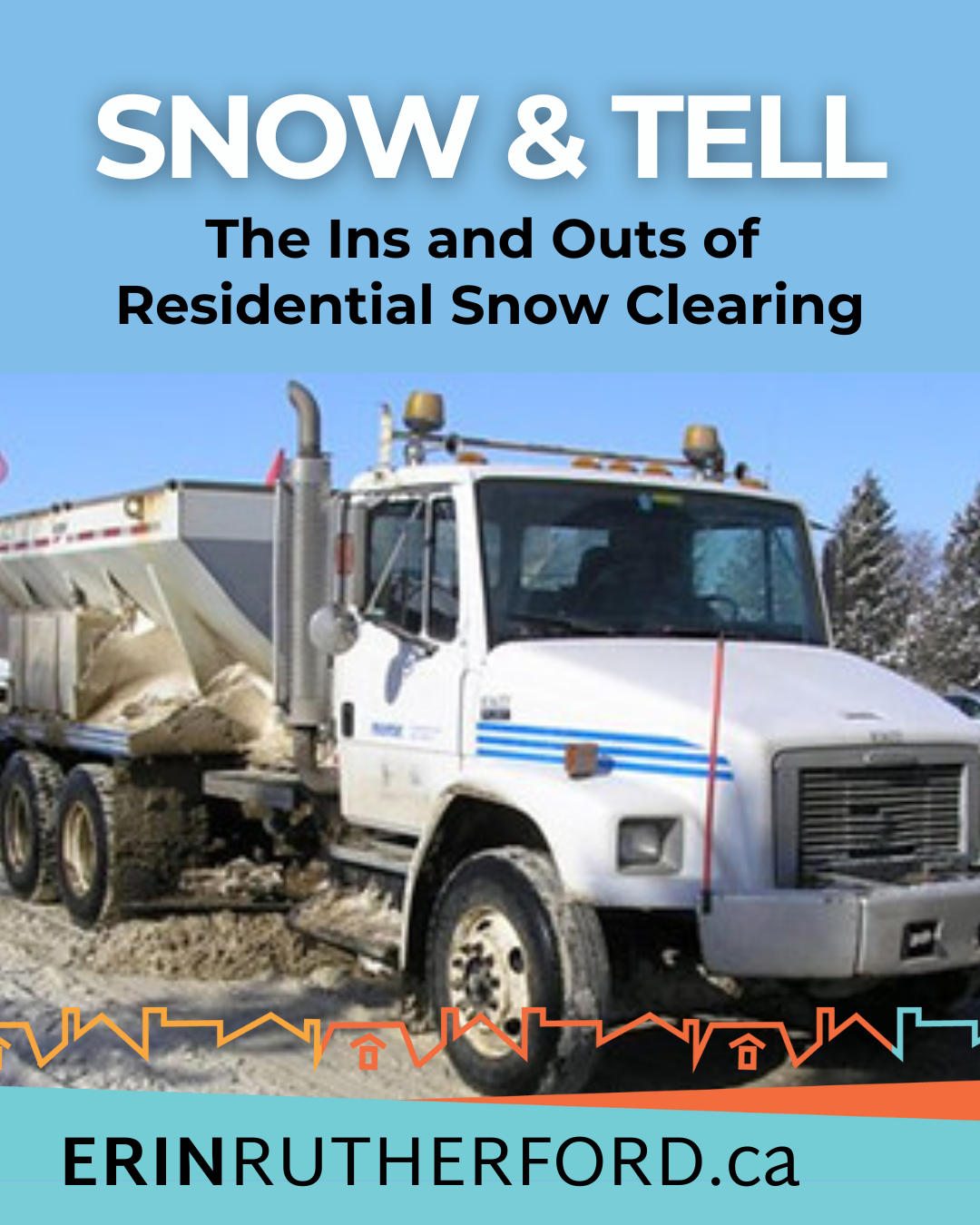SNOW & TELL: The Ins and Outs of Residential Snow Clearing
When you live in a winter city, one thing we can count on is a snowy season. And this winter has been snowier than many — in fact, we’ve got double the amount of snow on the ground compared to last year! As our climate shifts, we’re seeing more variability in our winters, from freeze-thaw cycles to big snow events, which can make things that much more challenging for citizens trying to go about their winter day.
Many of you have told me how important snow clearing is to you. I hear you and I understand. I’ve also received lots of questions about the snow clearing process for residential areas, including timelines, and expectations for our City crews. So, I wanted to share what the City currently does to make sure residential streets are cleared as efficiently as possible, and what needs further progress.
How does residential snow clearing work?
After our city’s major roads and business areas are cleared, residential snow clearing begins. On residential roads, the City strives to maintain a 5 cm snow pack to prevent deep ruts. Edmonton is huge. This means that there are A LOT of roads to clear — 12,000 km total, and 4,000 km are residential. Therefore, the process takes time, and it’s costly. We have to balance these kinds of quality services against cost to taxpayers, and it can be a tightrope walk.
Parking bans are critical for effective residential snow clearing. I know communication and enforcement of parking bans is an area of improvement, and Council is actively working on it. In the meantime, the best way to stay updated is to sign up for email or text notifications for parking bans.
Windrows are a byproduct of the snow clearing process, and I do understand the challenges they present. When there is a lot of snow, despite the best efforts of City crews, windrows may encroach onto sidewalks. However, this spillover is limited to half a metre, and will be cleared away if it hinders the use of the sidewalk. Windrows higher than 30 cm will be cleared in front of driveways, but the equipment for doing so might arrive a few hours after the blading is complete.
Increased snow clearing budget
Did you know we have the third largest winter maintenance budget in Canada? Indeed, the 2024–2025 season’s snow clearance budget is $67 million, a $3.4 million increase over last year. Incrementally, the City is heading in the right direction, but we’re playing catch-up. Between 2017 and 2022, the number of roads and pathways to clear increased by more than 20 per cent, yet the budget for such maintenance decreased by 14 per cent. Over the past several years, my focus has been on increasing core services, because I know Edmontonians value a city that works efficiently and effectively.
To that end, in 2022, Council approved a 20 per cent increase to the snow removal budget through 2026. While deciding between options for services, Council had to carefully consider cost. Some options would come with a hefty price tag. In fact, to blade residential roads after each snowfall, it would cost $143 million per season — more than double what our current budget is for the whole city. Removing windrows would cost about $12 million each time.
While quicker residential service is possible, it comes with a very high price tag. Therefore, Council has tried to find a solution that balances between the services people need, and a responsible use of taxpayer dollars.
Improving residential snow clearing services
Knowing how important snow clearing is to you, I will continue to push for improved services in these key areas:
-Incremental investments, as funding needs to keep up with inflation, growth, and the needs of citizens.
-Improving accessibility. I recently championed a new Assisted Snow Clearing Pilot Program to help low-income seniors and residents with mobility challenges. This program allows us to help citizens in need while strengthening enforcement for sidewalk clearing overall.
-Adjustments to operations in recognition of climate change. We’re seeing more climate variability, and our services need to reflect our changing needs.
-Improved communication and enforcement during parking bans. On Feb. 5, Council unanimously passed a motion for administration to provide an analysis of parking fine and towing options and a strategy for key locations. This is a step in the right direction.
Final thoughts and further information
As your Councillor, a fellow Edmontonian, and a resident of Ward Anirniq, I understand and even share your frustrations at times. I hope this information has helped to clarify the snow clearing process and limits for residential clearing. I’m glad we’re on the path to increasing the core services that matter most to you. As always, I encourage you to continue sharing your thoughts on snow clearing and the balance with service and budget with me.
Check out my previous blog post for more quick facts about snow clearing.

